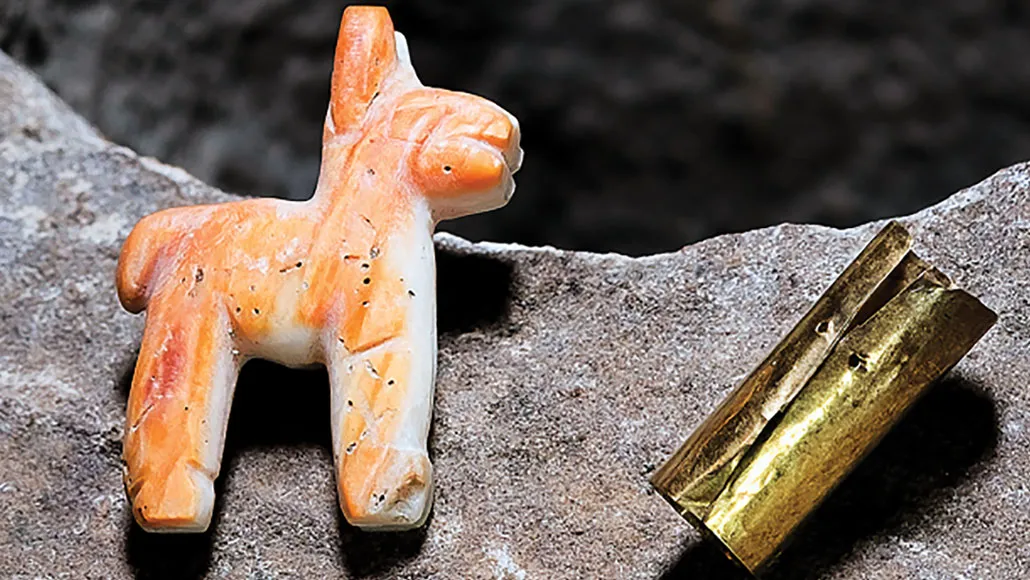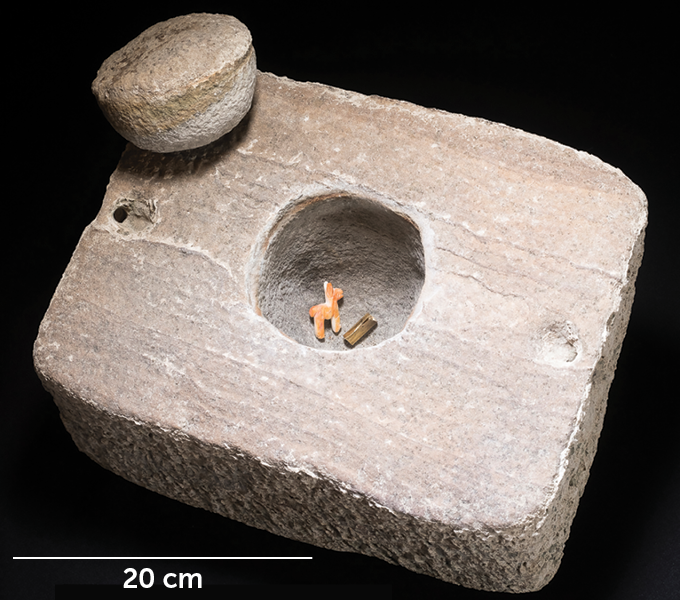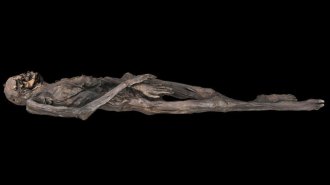A submerged Inca offering hints at Lake Titicaca’s sacred role
Similar stone boxes have also been found at human sacrifice sites in the Andes

An Inca ritual offering found submerged in Lake Titicaca included a llama or alpaca figurine carved out of a spiny oyster shell and a rolled gold sheet.
T. Seguin/Univ. libre de Bruxelles








